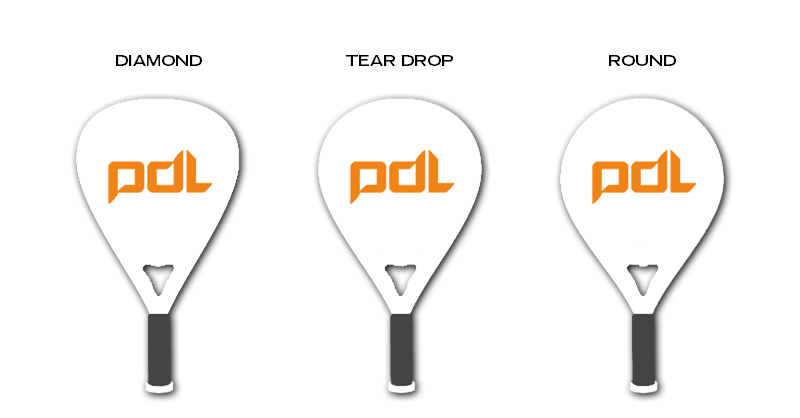Which padel racket suits you best and which is best for your way of playing? There is a sea of different rackets out there, with a variety of specifications, dimensions and shapes.
Choosing the right padel racket can be difficult. We have compiled some factors in this guide so that you can find a racket that is right for you! If you are unsure, turn to your nearest PDL Center, where you can test our rackets and also get help finding the right racket for you.
There are some main factors that make up the qualities of the racket. Let’s take a closer look at some:
The padel racket’s balance and shape
Balance will have a major impact on power and control. Rackets with a high balance point are often diamond-shaped and provide a lot of power behind the ball, but are often less focused on control. These are usually not suitable for beginners, as a good technical level is required to control the power. Balanced rackets are teardrop-shaped, these can fit most players and offer a good mix of power and control. Low balances are round in shape, which gives maximum control, but may lack power. They are generally considered suitable for those who want to keep the ball going, are strong defensively, but are less aggressive on the net.

The weight of the padel racket
The weight of the padel racket will have a big impact on the power you get. A lighter racket will be more maneuverable, but a heavier one will allow you to really hit hard. It is generally considered best to play with the maximum weight you feel comfortable with (this will probably increase as your skills improve) to get the most out of your game. Padel rackets tend to weigh between 330g and 375g, and have a tolerance of up to 10g. Rackets smaller than 365g on average are considered light, while those over 370g are often considered heavy.
Padel racket material
The impact surface covers the core, this is usually made of fiberglass, carbon fiber or graphite, in up to 3 layers. This will affect the hardness of your racket, fewer layers will mean more power, but it will not be as strong. While 3 layers provide more durability, but will not necessarily provide as much power.
